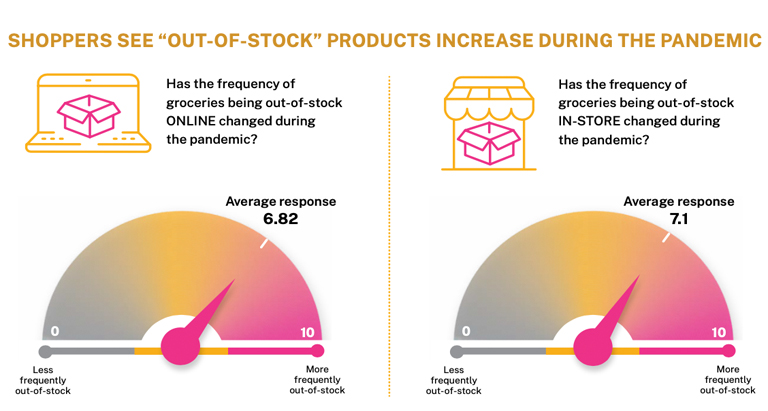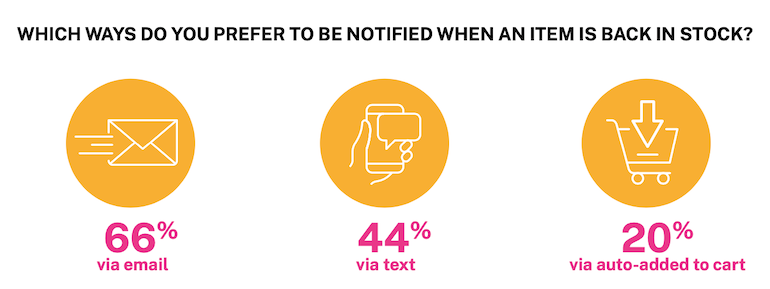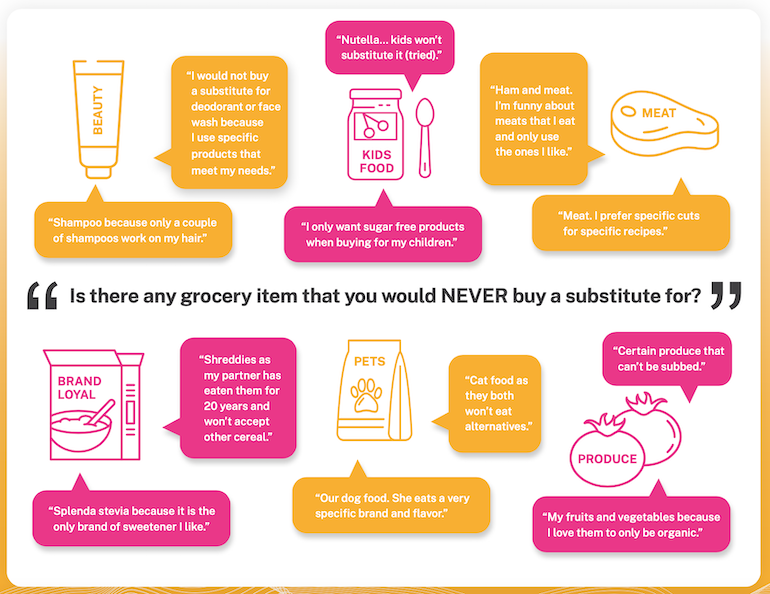Online grocery shoppers don’t want to be left hanging when the product they want isn’t in stock, a survey from e-commerce discovery specialist Lucidworks shows.
Of more than 800 U.S. and U.K. consumers who shop online for groceries at least once a month, 58% frequently or at every visit find a preferred grocery item unavailable, according to Lucidworks’ “Shoppers Stay Hungry Online: Groceries on the Internet in 2022” study, released yesterday. That presents a problem, however, as less than a third (30%) of e-grocery shoppers will stay on the same site or app to find a substitute and about 90% cite at least one product for which they won’t accept a substitute due to ingredients, preparation and brand.
What’s more, almost half of respondents (47%) said they will shop with a different grocer if they can’t find what they need on their preferred app or website.

On a one-to-10 scale, with 10 being more frequent out-of-stocks, consumers rated grocery not-in-stocks at 6.82 for online and 7.1 for in-store since the onset of the COVID-19 pandemic, Lucidworks reported.
“The survey revealed that shoppers are seeing increased out-of-stock messages online during the pandemic but are open to purchasing recommended substitutes from online grocery sites and third-party apps,” San Francisco-based Lucidworks stated. “Relevant recommendations require e-commerce grocers to understand a wide range of consumer preferences, including dietary restrictions, price fit and brand loyalties, for each individual shopper.”

Retailers can address online shopper discouragement from out-of-stocks by providing more functionality, such as inventory-based notifications, Lucidworks noted. Over half of those polled said a low-in-stock notification would influence their purchase decision, and 80% of those customers would be more inclined to make the purchase if alerted when desired products were low-in-stock.
“Intelligent push-based notifications will continue to serve as a powerful tool to keep shoppers loyal and coming back for more,” Lucidworks explained. “Sixty-six percent of respondents prefer to be notified via email when an item is back in stock, and 44% of shoppers prefer to receive those notifications via text.”

The survey also found that 20% of online grocery users want an item they like to be added to their virtual cart automatically when it comes back in stock.
Smarter searches can help grocers avoid missing merchandising opportunities by steering shoppers to substitute products that are in stock, according to Lucidworks. Yet just 28% of consumers surveyed said sites are making alternative recommendations every time an item they want is unavailable, while 11% indicated they rarely see recommendations for substitutes and typically wind up on a “no results” page.
“This means lower average order value and a hit to customer loyalty,” Lucidworks observed. “Smart search and filtering, relevant recommendations and displaying what’s in-stock — versus “out-of-stock” or “no results” — keep customers clicking into grocers’ online aisles.”
In terms of making online grocery transactions, 59% of shoppers polled buy directly from a grocer’s website, and 25% buy both directly from a grocer and through a third-party app. Thirty-nine percent purchase groceries online once a week, compared with 31% doing so twice monthly and 30% buying online once a month. Sixty-eight percent prefer to have their orders delivered.


